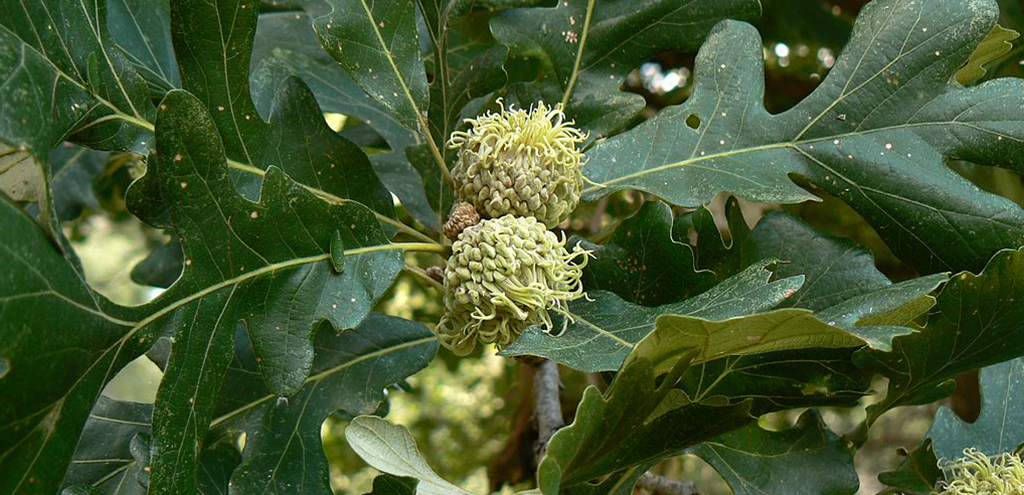THE LEAFLET

Oaktober: Bur Oak
Happy Oaktober y’all! While Fall Showstopper trees usually received the bulk of the attention this time of year (nevermind about pumpkin everything), we’re spending this month with a forestry powerhouse: the official tree of the United States of America, the oak! Formally recognized in 2004 (!) Congress named the Oak tree as our national tree. No species, just the genus Quercus. DC was a bit ahead of the game and recognized a tree in 1960. Believe it or not, it’s not a cherry tree- the scarlet oak is our official tree since we can’t exactly have a state tree.
Let’s start with the bur oak! Also known as Quercus macrocarpa, is an incredibly distinct, almost prehistoric-looking shade tree with dark, thick, ornate bark resembling wings adorning its trunk and branches. It features alternating leaves that are six to 12 inches long with five to nine lobes separated about halfway down by a pair of, particularly deep sinuses. And don’t forget to mention its namesake acorns! Larger than most oaks, the bur oak’s acorns feature a conspicuously fringed cap that extends about halfway down the nut. This is also why they can be referred to as mossycup oaks.
A slow-growing shade tree best planted in a sunny location, the bur oak can be expected to reach about 40 feet in height in 50 years. The fact that it is slow-growing is great for city locations, but what’s even better? This tough tree tolerates poor air and soil conditions like pollution and heat stress. Plus, once it matures, bur oaks offer dense shade!
Some fun facts about the Bur oak: Native Americans used its inner bark for varied medicinal purposes. It is the most western of the eastern oaks, extending all the way to the foothills of the Rockies where it is reduced to a shrub. Because of this, in pioneer days on the plains, bur oaks came to the rescue of unfortunate travelers who needed new wagon tongues, wheel hubs or spokes.
The bur oak is available through our residential planting program, RiverSmart Homes. You can also get up to $100 back for planting this tree yourself through our tree rebate program.